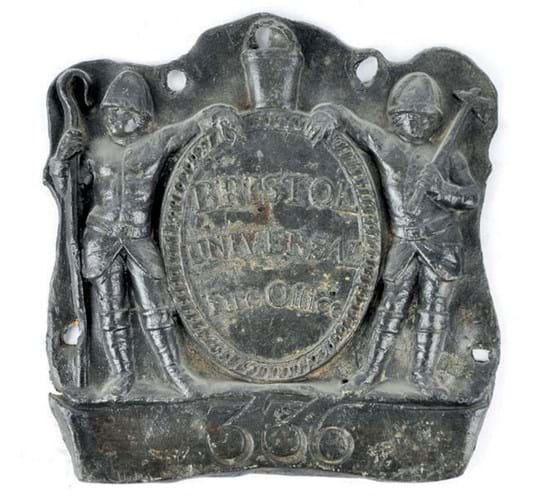Early marks, pinned high to walls of insured houses, were made of lead with later examples typically in copper and tinned iron until production largely stopped in the 1840s.
A collection of fire marks which were previously on display at the Chartered Insurance Institute in London went under the hammer at Special Auction Services (17.5% buyer’s premium) in Newbury on November 12. It was described as one of the most important to come on the market since the early days of fire mark auctions and collecting in the 1930s.
Around 300 marks were British and the remainder from countries operating similar systems including the US, Russia and others in continental Europe and the Middle East. Many pieces were sold for under £100 but stronger bidding emerged for some of the rarer 18th century British lead marks.
Early three-digit policy numbers are always appealing to collectors as they suggest a mark close to the founding of a particular firm. The mark for the Bristol Universal Fire Office with the stamped policy number 336 (c.1774) sold at £4400 (estimate £1000-1500) while that numbered 845 for the early days of the Liverpool Fire Office (1776-94) took £1100. Both were in decent condition, although had been polished to a sheen.
Another rarity was a lead mark for the short-lived Royal Irish Assurance Company of Dublin (1823-27). Although the border was partly detached, it took £2100.















